Cumulative values and performance rating of all games
We’ll do this today with the benchmarks as usual. This is important because in the sum of all games, the peculiarities of the respective architectures quickly blur. In the end, there are only 10 specially selected games, but I chose them exemplarily from over 20 titles and the pre-tests with several cards, because the result was almost exactly the same in the end. The weighting between the titles with pure raster graphics without DXR and those with DXR was done in a ratio of 6:4, with the four DXR titles coming out very differently. This may not be entirely in line with the manufacturer’s wishes, but it reflects everyday life well.
Full ray tracing fun in Cyberpunk 2077, combined with more mid-range effects like in Metro Exodus EE and the hybrid implementation of lighting to Marvel’s Guardians of the Galaxy and Shadow of the Tomb Raider, where ray tracing really only comes into play humanely. DXR is being implemented in more and more games, and the current engines almost all allow for it by now. From this point of view, it would be just as unfair to completely forego it as it would be to exclusively use such titles with DXR. Since every user has different preferences and some prefer to do without DXR completely (why actually?), I accommodate all target groups as always.
Sum of all games
First, I’ll show you the normalized results of all games, since that’s what most people are most interested in. Of course, the details come right after that in the usual detail. I normalized the FPS and percentiles and formed a geometric mean (Geomean), because statistically this is simply more accurate and is also handled that way in the industry. And we can see that already the averaged FPS are closer to the duo of GeForce RTX 3060 12GB and Radeon RX 7600, and the original RTX 4060 8GB can stand out a bit.
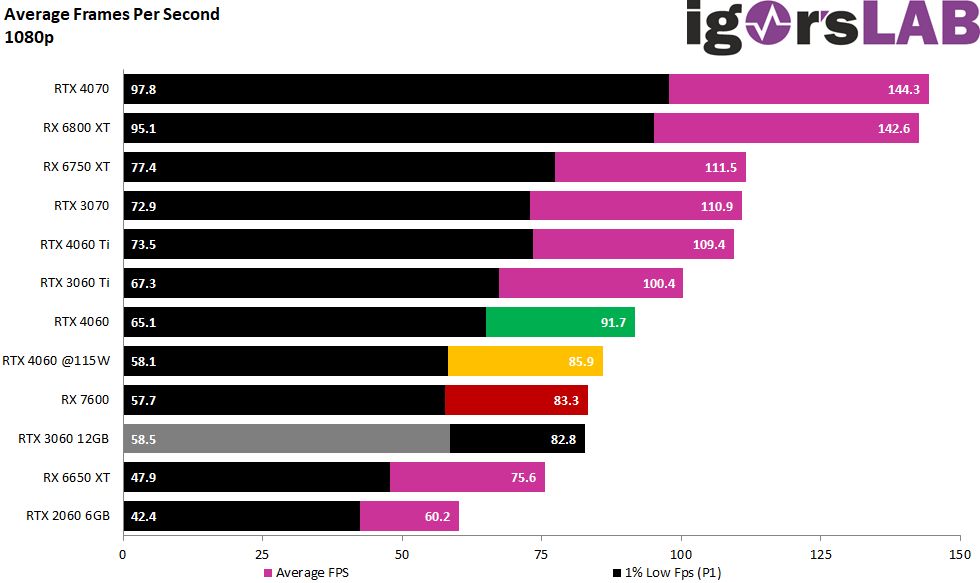
Let’s move on to the percentage evaluation, where I have set the original RTX 4060 8GB as the 100% mark. The reduced power consumption of 115 watts costs 6.3% performance, so the difference to the Radeon RX 7600 is only 2.8 percentage points and that to the GeForce RTX 3060 12GB only 3.5 percentage points. Since I was still quite generous when pricing in the 3.3 volts, and a real shunt solution might even have been much more restrictive, the GeForce RTX 4060 8 GB would end up almost on par with the other two cards with only 115 watts.
That’s a scoundrel who thinks evil of it. I wouldn’t go so far as to accuse NVIDIA of a real intention here, but in the end it is of course also the case that a 130 watt card would probably have sold rather poorly in the power-saving films. It is what it is, but it leaves a very bland aftertaste.
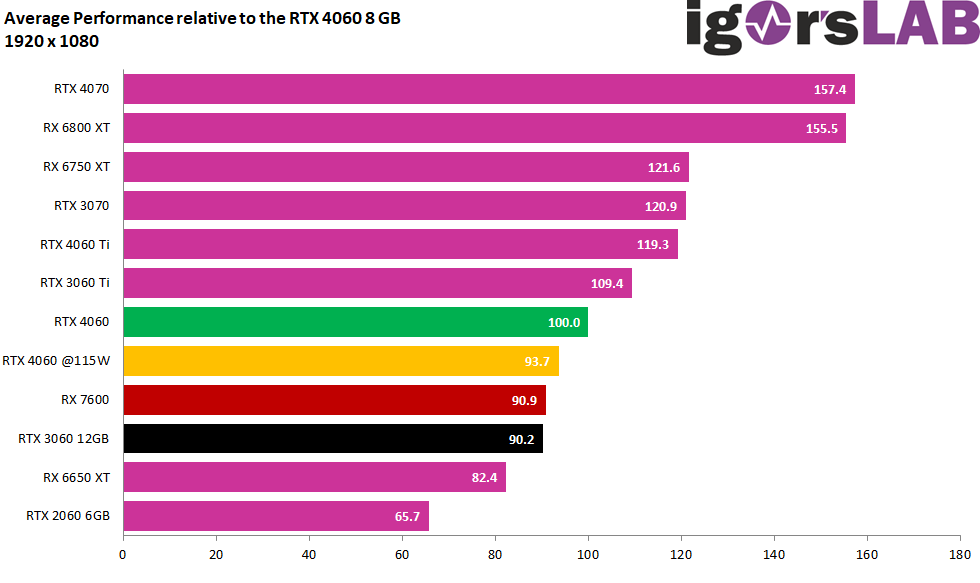
In the P1 Low, i.e. the Min FPS, the 115 watt variant is even behind a GeForce RTX 3060 12GB and almost on par with the Radeon RX 7600. The 10.7 percent gap is then quite a lot.
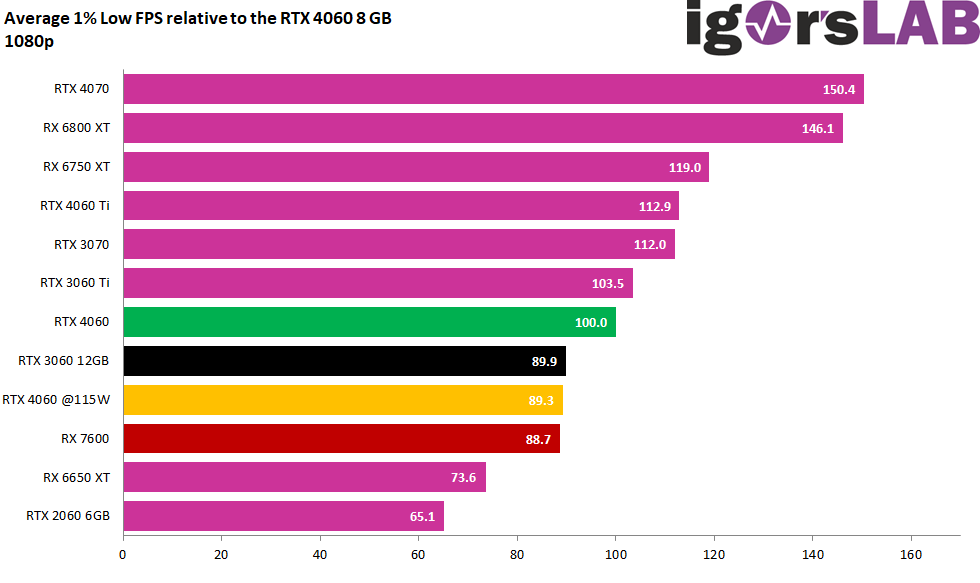
With an average of around 112 watts, the statement of 110 watts in gaming is quite close, at least somewhat.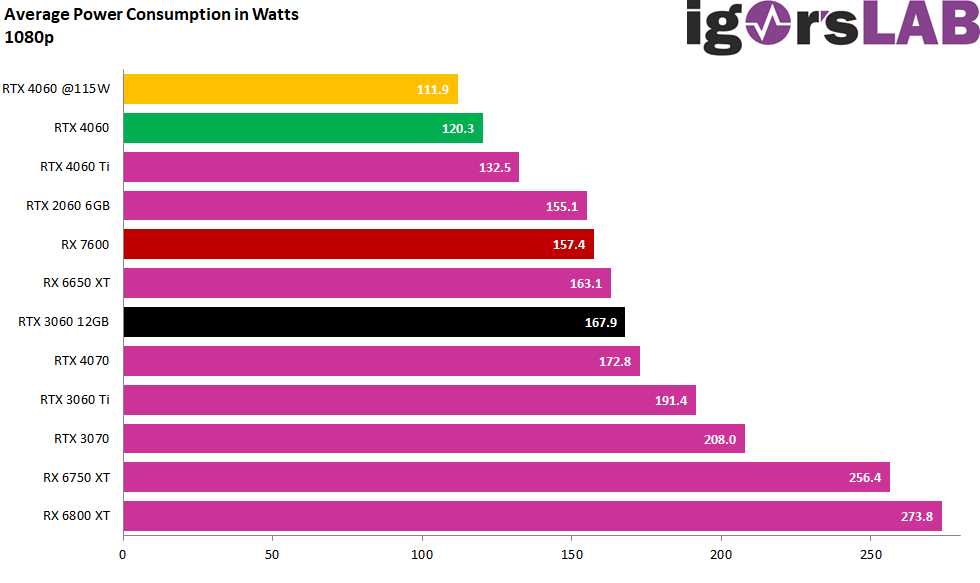
As far as efficiency is concerned, the reduced card could hardly gain, which also points to the actual sweet spot.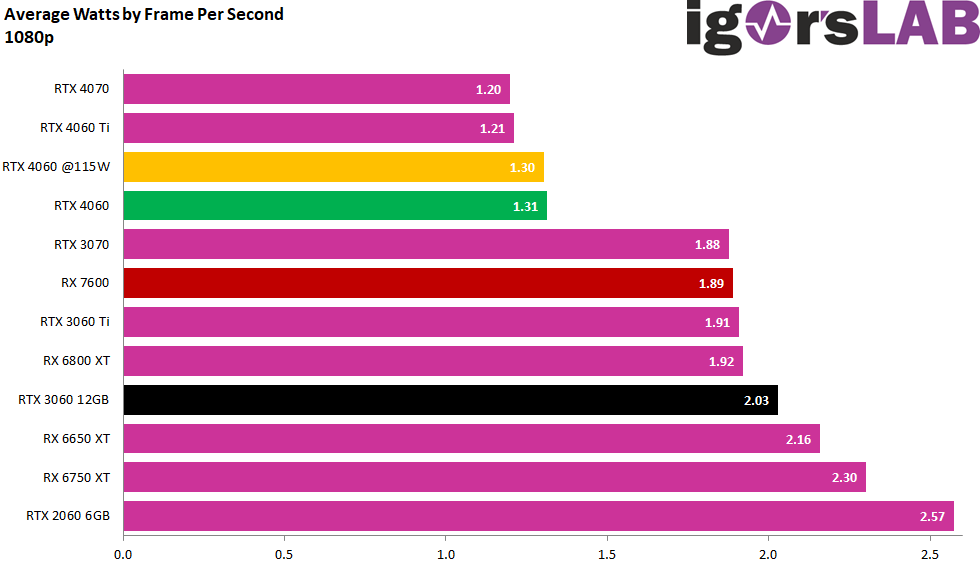
Summary and conclusion
I don’t want to fuel any conspiracy theories here, but it’s pretty obvious where the card would have ended up in reality with proper monitoring and functioning telemetry. With the predecessor and the Radeon RX 7600! The 115 watts are not enough at the back and not at the front and the card would probably have had to take even more of a beating from the testers. And the still extremely tough and sluggish sales would probably not have started at all.
I would have liked to see a bit more honesty, also in marketing. The price is not in any relation to the performance, especially not in the reduced version. Saving energy unfortunately doesn’t make this card more attractive, but only slower. That is also a fact that cannot be denied. Too bad, but I would have liked to report something more positive.
If you want to watch my launch video again: here it would be.
The graphics card was provided by Palit for this review. The only condition was the compliance with the lock period, no influence or compensation took place.
- 1 - Introduction, test methodology and causes
- 2 - Anno 1800
- 3 - Cyberpunk 2077
- 4 - Far Cry 6
- 5 - Horizon Zero Dawn
- 6 - Marvel's Guardians of the Galaxy
- 7 - Metro Exodus EE
- 8 - Rainbow Six: Extraction
- 9 - Shadow of the Tomb Raider
- 10 - A Total War Saga: TROY
- 11 - Watch Dogs Legion
- 12 - Summary and Conclusion

































50 Antworten
Kommentar
Lade neue Kommentare
Urgestein
1
Mitglied
Urgestein
1
Urgestein
Urgestein
Urgestein
Urgestein
Veteran
Neuling
Neuling
Urgestein
Urgestein
Urgestein
Urgestein
Veteran
Veteran
Urgestein
Alle Kommentare lesen unter igor´sLAB Community →